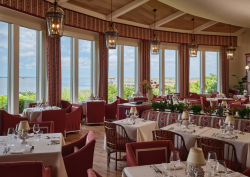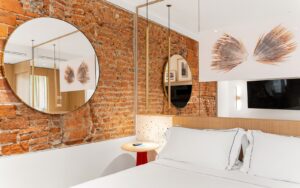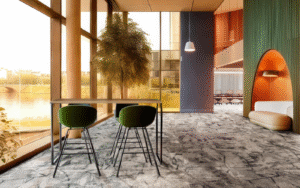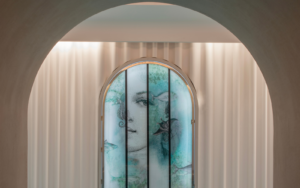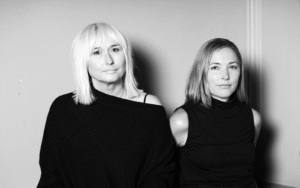It is not everyday that a Hotel Designs panel discussion event is, quite literally, done in-the-round – but there was clearly no better space to discuss the blurring of design boundaries than seated within the Table Place Chair ‘Circle of Life’ furniture piece to explore the need for more flexible hospitality design spaces (scroll down to watch the full video)…
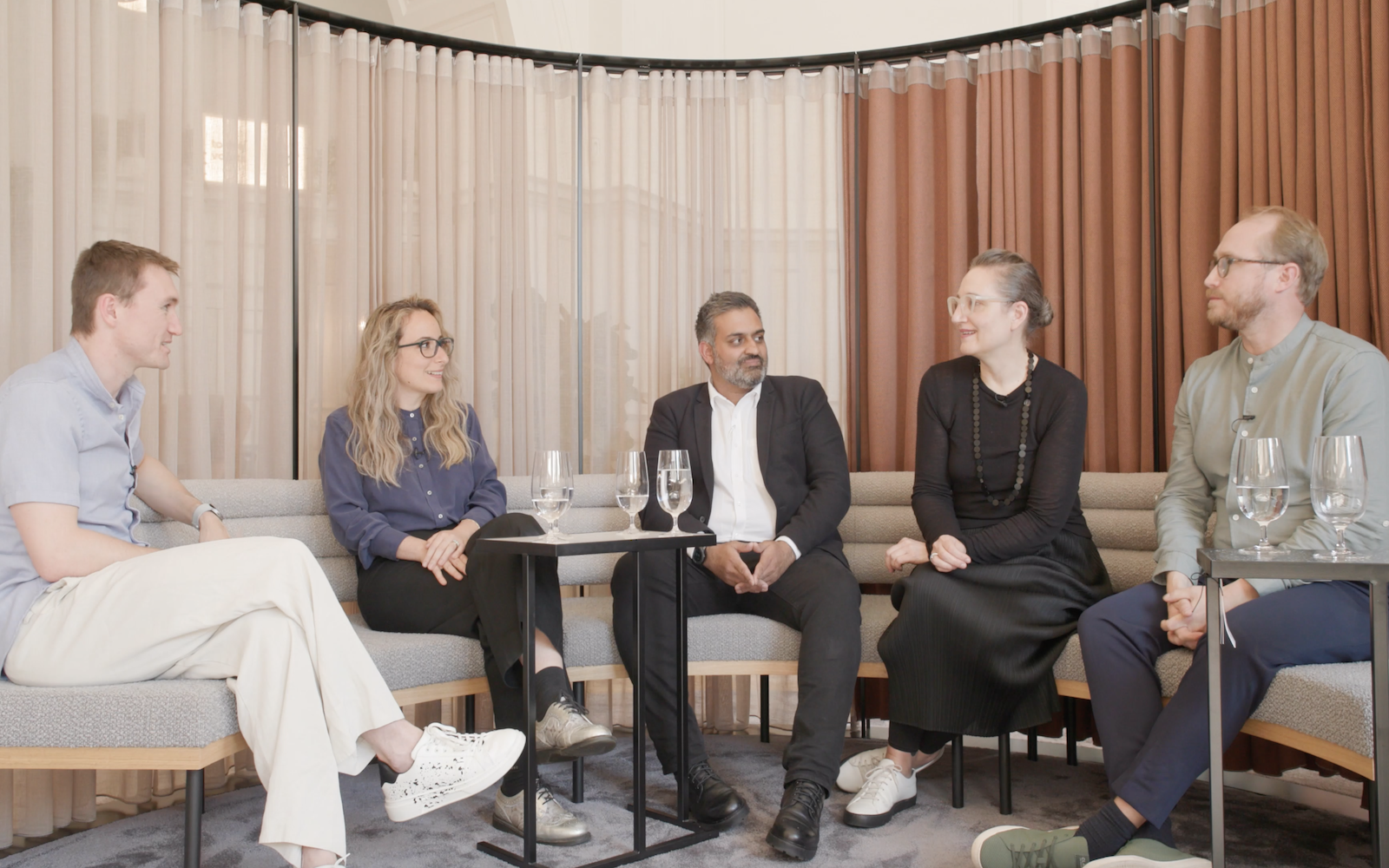
Debate, discussion and challenging conventional approaches to design are always an integral part of a design event like Clerkenwell Design Week. With this in mind, Hamish Kilburn, Editor of Hotel Designs, in association with Table Place Chairs, brought together a panel of creative minds from across the hospitality and design spectrum to discuss the design blurring of lines, the need for flexibility and also share thoughts on collaboration.
On the panel:
- Arun Rana, Head of Design (Northern Europe), Accor
- Tina Norden, Partner, Conran and Partners
- Ben Webb, Co-Founder, 3 Stories
- Nasim Koerting, Head of Design, The Office Group (TOG)
While there is no doubt that design boundaries have indeed blurred, the question of how to address the need for more flexible spaces creatively came under the reflected spotlight. It is not only the role of the designer but is something that needs to be addressed across all layers of hospitality – from the concept developed by the designers through to implementation by the managers and brand owners. Spaces can no longer be dealt with one-dimensionally as functions merge. With F&B and wellness clearly leading the pack when it comes to mega trends, and with clients and guests having increased design expectations, augmented hospitality becomes key.
Watch the full panel discussion below:
”To bring people back we need to rethink our spaces and understand what people actually need and want from those spaces,” said Aran Rana, Head of Design at Accor in the Northern Europe region. “It is important, as designers, we are constantly looking at how to challenge those boundaries, how we can improve things and how we can do things differently,” added Tina Norden, Partner, Conran & Partners.
Flowing through the whole discussion was of course, the F-word. ‘Flexibility’ has become the holy grail of hospitality design, as a hotel room is no longer just a place to sleep, an office is no longer simply a place to work – being able to provide well-designed multi-disciplinary space is now a necessity. “All designers are problem solvers,” added Nasim Koerting, Head of Design at The Office Group (TOG). “We want to use design thinking to solve the world’s problems.”
Interestingly, the ‘blurring of boundaries’ has also resulted in a shift of thought more broadly and a greater democratisation of space within hospitality. As the demands on a well-designed space increase, those overlapping circles within the Venn diagram of hospitality would appear to become both more common and more convoluted. “When you start a job you need to cast the creative net quite wide,” said Ben Webb, Co-Founder, 3Stories. “Especially if you are working on a completely new concept, you need time to develop and research new ideas – this is a process designers need to go through.”
With boundaries smudging not just between physical spaces, but also between brands, between lifestyle and luxury, designers, suppliers, it was suggested that brands need to work together to be able to deliver, with that the importance of keeping a balance between creativity and control within the arena of hospitality design specifically becomes key. Rana added an interesting point on this matter. “I don’t like to box certain designers in for certain brands,” he said. “Sometimes it is about bringing a new perspective in – bringing in a designer who usually works in F&B to deliver a bedroom design can introduce a new perspective, which is important when discussing the blurring of boundaries and function.”
And of course, no conversation on the changing dynamics in hospitality in 2022 would be complete without understanding how these spaces have emerged since the pandemic. “The assumption coming out of Covid was that there would be fundamental changes to the workspace,” said Webb. “While this is true, what is clear is that the need for private or personal space within that remains – just on a different scale within the more fluid working environment.”
Koerting added: “For us at TOG, it is about designing a space with plenty of choice – so that when people come back in they feel that there is a space for them, that suits their mood and the function or tasks they need to do”
With design requirements being about flexible and multi-functional spaces, is the potential flip side of this debate the risk of losing all purpose in the process of being asked to be too many things to too many people; is there a danger of the design core being diluted and ending up with something generic and accommodating rather than fit for purpose? The key to avoid this is to focus on the feel of a space while keeping functionality open – a tall order. The creative elements need to feel unique, but the function needs to be flexible.
This conversation (watch the full panel discussion above) was exclusively sponsored by Table Place Chairs, and produced by CUBE.
Main image credit: Hotel Designs






